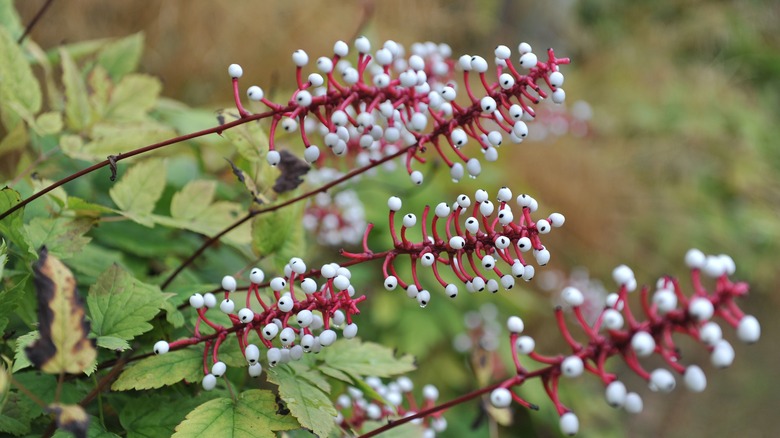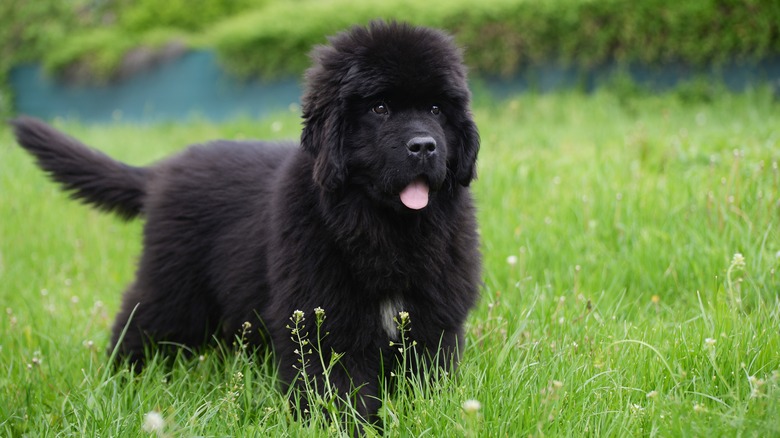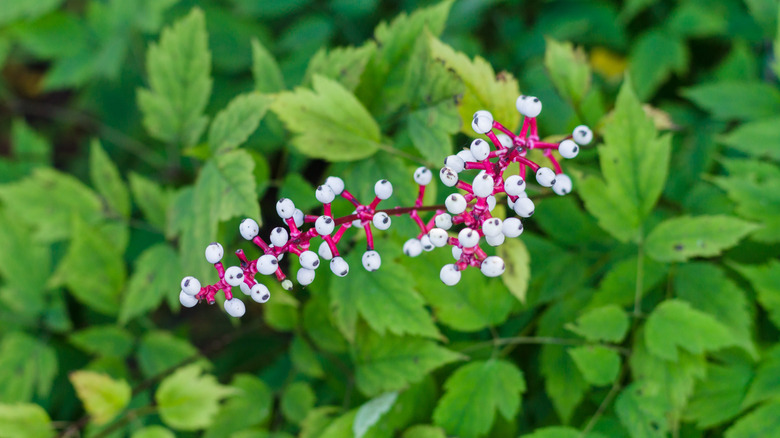Is Growing White Baneberry A Good Idea (Or A Dangerous Mistake)?
There's a kooky and strange plant that looks fantastically unique from the annual garden plants found in most gardens. If you've ever seen white baneberry, you might be entranced by its striking look. But behind the fanfare of their intricate flowers, weird fruits, and colorful leaves, it's toxic to humans and most animals. So while it may make a great addition to a garden in terms of aesthetic appeal, it's a dicey choice if people and pets are going to be present.
Although it's colorful, produces intriguing fruits, and works well for homes in USDA growing zones 3 to 8, gardeners have to decide whether the dangers outweigh its visual contribution. Every part of the plant is toxic, so it's often a plant that people avoid when planning their landscaping. Here's more about why planting white baneberry could be a big mistake — and if it's possible for it to safely exist in your garden.
Why growing white baneberry can be dangerous
White baneberry produces bright white or red berries with dark dots on them, which gives them their nickname doll's eyes. Wispy white flowers and bold green leaves contrasted against the berries would seem to make them a gorgeous addition to any garden. But as ornamental as they may be, the entire plant is toxic from roots to berries. Without knowing this, unsuspecting adults, kids, and animals may try to eat it, which can result in serious illness. Even handling the plant with bare hands has been known to cause blisters and burning.
Luckily, there is a hearty list of alternative berry-producing bushes that can provide colorful fruit without dangerous side effects. For edible berries, blackcurrants, huckleberries, lingonberries, and serviceberries are all great options that grow similarly shaped fruits that are safe and tasty to eat. It just isn't worth having toxic plants in your garden if they pose a risk to adults, kids, or pets touching or ingesting them.
Should you ever grow white baneberry?
Because white baneberry is poisonous, is it ever worth planting in a garden? There may be a few instances when this bushy plant is perfectly acceptable. Gardeners who don't have pets or young children at home may find that this ornamental plant adds to the surroundings of their back or front yards. Households that are aware of the dangers of ingesting the berries, leaves, stalks, or roots can easily avoid it. It's not all doom and gloom for the white baneberry either. Historically, Native Americans relied on the plant for medicinal uses.
Although this plant doesn't attract a wide array of species, some insects and animals do appreciate having it around. Species like the short-tongued bee collect the pollen and American robins eat the berries and ingest the seeds. Even if you can't handle the beautiful but odd-looking plant, you can get visual enjoyment from having it in a garden and provide another potential food source for other critters.



